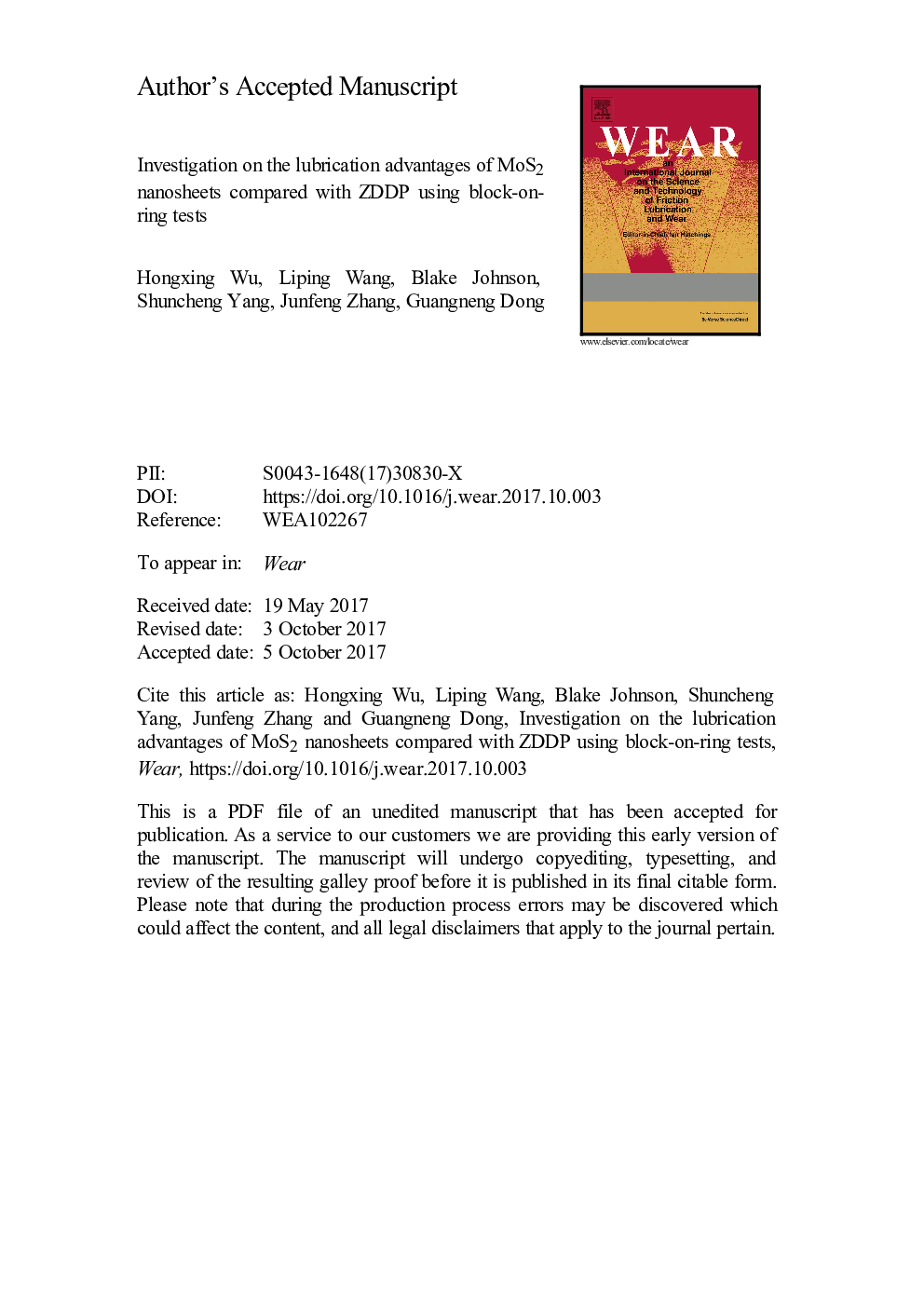| Article ID | Journal | Published Year | Pages | File Type |
|---|---|---|---|---|
| 7004059 | Wear | 2018 | 23 Pages |
Abstract
The purpose of this work was to expand the applications of molybdenum disulfide (MoS2) nanosheet additives by investigating their effectiveness and advantages for lubricating line contacts between bearing steel and medium carbon steel surfaces. The friction and wear effects of MoS2 nanosheet additives were investigated using block-on-ring tests, and compared with those from zinc dialkyldithiphosphates (ZDDP). Both additives were combined with ISO VG 32 white oil as base fluid. Results suggest 0.25Â wt% MoS2 nanosheets exhibited similar friction coefficient, oil temperature and wear scar width with those of ZDDP at low loads; while the reductions of friction coefficient and wear scar width were 28.6% and 34.3%, respectively, compared to the behavior of ZDDP at high load (459Â N). Furthermore, the wear scar widths of the ZDDP containing oil significantly increased in 2Â h tests, while they remained constant with a smaller size for 0.25Â wt% additives of MoS2 nanosheets at a load of 326Â N. Scanning electron microscope observations showed some pits on the wear scar lubricated with ZDDP, compared with spalls for 0.06Â wt% MoS2 nanosheets. The wear scar was smooth and had a patched film for tests using 0.25Â wt% MoS2 nanosheets. Energy-dispersive X-ray spectroscopy and X-ray photoelectron spectroscopy analysis revealed that the patched surface film was composed of MoS2 and phosphate, and that film reduced friction coefficient and wear. The results highlight how high concentration MoS2 nanosheets exhibit significant advantages over ZDDP in reducing friction and wear in high load in line contact.
Keywords
Related Topics
Physical Sciences and Engineering
Chemical Engineering
Colloid and Surface Chemistry
Authors
Hongxing Wu, Liping Wang, Blake Johnson, Shuncheng Yang, Junfeng Zhang, Guangneng Dong,
